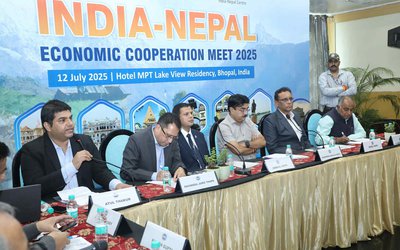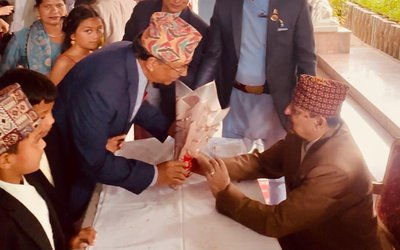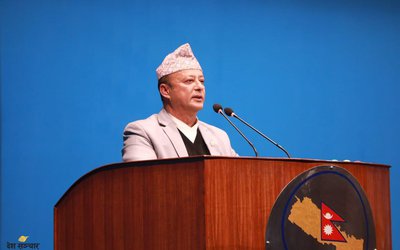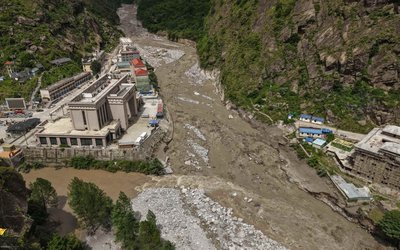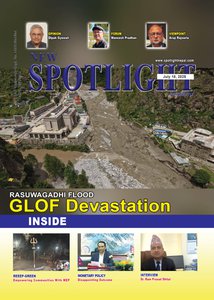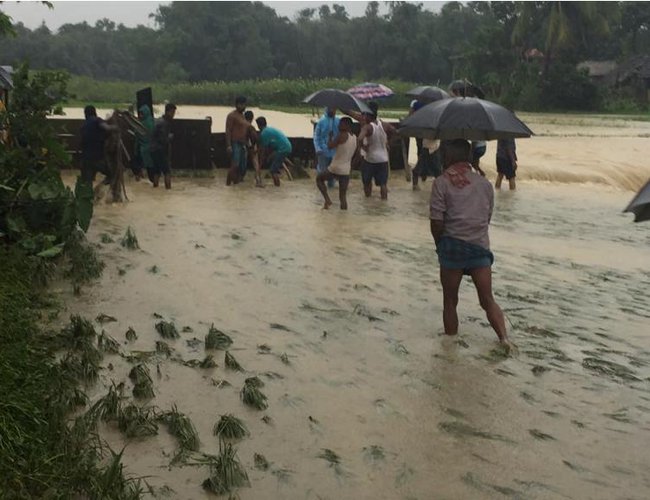
Despite the efforts of international community and government of Nepal, the flood and landslides victims of Nepal are yet to get the relief and many of them are still living in bad conditions.
Since 1 June, 37 of the 75 districts in Nepal have been impacted by floods and landslides triggered by heavy monsoon rains. Solukhumbu and Palpa districts were particularly affected by the combined effects of flooding, landslides and heavy monsoon rains. To date, authorities confirmed at least 34 deaths. The Government has provided cash grants to families in Saptari District whose houses were destroyed by the floods. A rapid needs assessment is ongoing in Saptari.
According to a report compiled by http://reliefweb.int/disaster/fl-2017-000107-npl, Red Cross volunteers and emergency teams are searching for survivors as flash floods and landslides have submerged thousands of homes in several parts of Nepal, mostly in the south of the country. The floods and landslides have claimed at least 53 lives over the past three days, in the Terai region bordering India and other areas of Nepal, according to the Government of Nepal. Dozens more are missing or injured. “Monsoon rains and floods in the past two weeks have affected more than 100,000 people. First aid and relief supplies have been provided around the clock by hundreds of volunteers from the Nepal Red Cross Society,” said Dev Ratna Dhakhwa, Secretary General, Nepal Red Cross Society.
Due to continuous rainfall in different parts of the country, approximately 100,000 people in 31 districts have been affected by the floods and landslides in the last two weeks. According to the Nepal Red Cross Initial Rapid Assessment (IRA) reports received from the affected districts as of 13 August 2017, a total of 27,861 families (139,300 people) have been affected, of which 6,247 families (47,350 people) are displaced. Some 2,964 houses are completed destroyed and 8,344 are partially damaged. The report indicates that 64 people are confirmed dead; 16 people are still missing, and 44 people have been injured. The numbers have been increasing day by day; this is likely to continue as some of the affected areas are challenging to access. NRCS has already deployed 448 Red Cross volunteers including District Disaster Response Team (DDRT) members, trained First Aid and National Disaster Response Team (NDRT) members on the ground for immediate response.
As of 16 August, 18,320 families are confirmed to have been displaced, and 75,000 families are affected by the flooding. More than 100,000 people have been rescued by formal and informal search and rescue. There have been 123 recorded deaths, according to Nepal's Ministry of Home Affairs (MOHA). Water levels in flood-affected areas have been gradually receding as the rainfall has significantly decreased or stopped in most parts of the country. However, the number of affected districts has increased to 35 (out of 75 districts nationwide); Morang, Sunsari, Siraha, Rautahat, Mahottari, Dhanusa, Sindhuli, Bara, Parsa, Dang, Banke and Bardiya are among the worst hit districts. The Ministry of Home Affairs says that more than 80 percent of land in the Tarai has been inundated. Hydro-meteorological stations in Banke, Chitwan and Makwanpur recorded the heaviest rainfall in 60 years. Moderate to heavy rains have been forecast across Nepal for the coming days. Significant access challenges remain: Biratnagar airport remains closed, and other basic services such as transport routes, electric power and drinking water supplies, and communications are reportedly still disrupted.
As of 18 August, the districts with the highest numbers of people affected by the floods are: Saptari, Rautahat, Mahottari, Siraha, Baridya, Sunsari, Banke, Chitwan, Morang, Sarlahi, Kailali and Jhapa. Across all affected districts, 44,683 families have been displaced; at least 383 schools and learning centres are being used as temporary shelters. Flood waters are receding; however, with access improving and a better understanding of the impact and damage caused by the floods, the overall number of affected people continues to rise. There are significant concerns about the possibility of disease outbreaks after the floods, with affected people facing difficulties in accessing adequate health care.
As of 21 August, Initial Rapid Assessments (IRA) have been completed in 24 districts. A total of 1.7 million people are reported to be affected, of whom nearly 461,000 people, or 91,400 families, have been displaced from their homes. While many roads have reopened and Biratnagar airport is now operational during daylight, according to data from the Nepal Food Security Monitoring System, more than 50 villages remain inaccessible by road.
On 25 August, Humanitarian Country Team launched Joint Response Plan, seeking US$41.4 million to provide immediate humanitarian assistance to 1.7 million people comprising health, water sanitation and hygiene (WASH), food security, nutrition, shelter, livelihood, protection, education and early recovery support for the coming six months.
- MONETARY POLICY: Disappointing Outcome
- Jul 17, 2025
- MELAMCHI WATER SUPPLY: No Interruption During Monsoon
- Jun 25, 2025
- KOREAN RETURNEES: Successful Integration
- Jun 25, 2025
- UPPER TRISHULI-1: Engaging With Local
- Jun 25, 2025
- IME GROUP: Twenty Five Years Of Journey
- Jun 24, 2025

